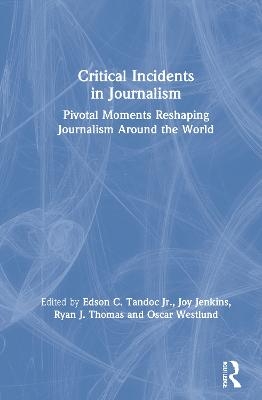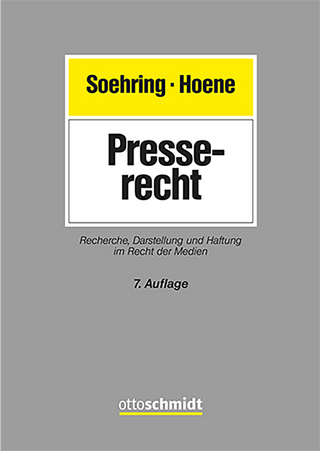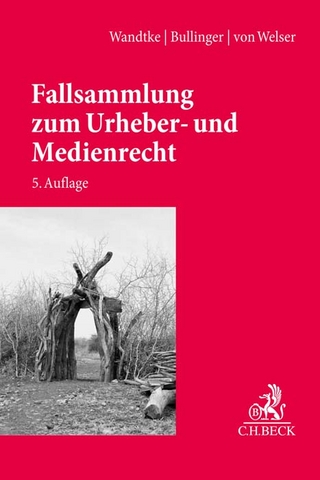
Critical Incidents in Journalism
Routledge (Verlag)
978-0-367-89536-5 (ISBN)
Ranging from the Rwandan genocide to the News of the World hacking scandal in the UK, this book defines a critical incident as an event that has led journalists to reconsider their routines, roles, and rules. Combining theoretical and practical analysis, the contributors offer a discussion of the key events that journalists cover, such as political turmoil or natural disasters, as well as events that directly involve and affect journalists. Featuring case studies from countries including Australia, Germany, Brazil, Kenya, and the Philippines, the book explores the discourses that critical events have generated, how journalists and other stakeholders have responded to them, and how they have reshaped (or are reshaping) journalistic norms and practices. The book also proposes a roadmap for studying such pivotal moments in journalism.
This one-of-a-kind collection is a valuable resource for students and scholars across journalism studies disciplines, from journalism history, to sociology of news, to digital journalism and political communication.
Edson C. Tandoc Jr. is an Associate Professor at the Wee Kim Wee School of Communication and Information at Nanyang Technological University in Singapore. His research focuses on the sociology of message construction in the context of digital journalism. He has conducted studies on the construction of news and social media messages. His studies about influences on journalists have focused on the impact of journalistic roles, new technologies, and audience feedback on the various stages of the news gatekeeping process. This stream of research has led him to study journalism from the perspective of news consumers as well, investigating how readers make sense of critical incidents in journalism and take part in reconsidering journalistic norms; and how changing news consumption patterns facilitate the spread of fake news Joy Jenkins is an Assistant Professor of digital journalism at the University of Tennessee School of Journalism and Electronic Media. Her research uses a sociological approach to examine changing organizational identities and practices in newsrooms, with a particular focus on local media. Jenkins is also a research associate at the Reuters Institute for the Study of Journalism at the University of Oxford. Ryan J. Thomas is an Associate Professor of Journalism Studies at the University of Missouri’s School of Journalism. His research program addresses the intersection of journalism ethics and the sociology of news, focusing on journalism amid processes of change: the forces shaping journalism, how journalists make sense of them, and how these changes affect journalism’s institutional obligations and role in public life. His research has been published in such journals as Journalism Studies, Digital Journalism, the Journal of Media Ethics, Journalism Practice, and New Media & Society Oscar Westlund is a Professor at the Department of Journalism and Media Studies at Oslo Metropolitan University, where he leads the OsloMet Digital Journalism Research Group. He holds secondary appointments at Volda University College and University of Gothenburg. He is the Editor-in-Chief of Digital Journalism. He leads the epistemologies of digital news production, a research project funded by the Swedish Foundation for Humanities and Social Sciences. He is a project member of the international research project Source Criticism and Mediated Disinformation (2020-2024). His most recent book is What is Digital Journalism Studies? (Routledge, 2020), co-authored with Steen Steensen.
Introduction: Theorizing critical incidents in journalism across the globe
Joy Jenkins, Edson C. Tandoc Jr., Ryan J. Thomas and Oscar Westlund
SECTION I Conceptualizing Critical Incidents
1.1 Critical incident as a construct in journalism studies
Paul D’Angelo
1.2 Journalistic critical incidents as boundary making and the making of boundaries around critical incidents
Matt Carlson
SECTION II Characteristics of Journalistic Work
2.1 Peeling or plagiarizing? A Danish media scandal as an incident of re-instating boundaries in the grey zones of "good" journalistic citing practices
Jannie Møller Hartley, Maria Bendix Wittchen and Mark Blach-Ørsten
2.2 The voices of Aleppo: Re-evaluating US journalistic practices for news coverage of children during the Syrian Civil War
Jeanna Sybert
2.3 Reporting when the current media system is at stake: Explaining news coverage about the initiative on the abolition of public service broadcasting in Switzerland
Linards Udris, Mark Eisenegger, Daniel Vogler, Andrea Häuptli and Lisa Schwaiger
2.4 "You can’t run away from the truth": Journalistic reflections of enduring injustices that shape news-making in Kenya
Irene Awino
2.5 Mexico’s 2006 Drug War and its impacts on newsroom practices: From violence to anonymity and self-censorship
Manuel Chavez
2.6 (Re)telling the story: Is the Rwanda genocide a critical incident in journalism?
Florence Madenga
2.7 False accusations in a school: A critical incident in Brazilian journalism 25 years later
Rafael Grohmann, Felipe Moura de Oliveira and Moreno Osorio
SECTION III Communities Engaging in Interpretation
3.1 Critical incidents and auto-analysis: Photojournalists’ introspections while covering the drug war in the Philippines
Ma. Diosa Labiste
3.2 Boundary work on media freedom after the phone hacking scandal in the United Kingdom
Binakuromo Ogbebor
3.3 United in protest: Coverage of attacks against journalists in the 2019 Hong Kong demonstrations as a critical incident
James Zhang and Joy Jenkins
3.4 Save the Children UK’s #blogladesh campaign and the change in humanitarian reporting
Glenda Cooper
3.5 Lives and livestreaming: Negotiating social media boundaries in the Christchurch terror attack in New Zealand
Matthew Chew and Edson C. Tandoc Jr.
SECTION IV: Consequences of Critical Incidents
4.1 Cross-border investigative collaboration on the surviving stories: The Forbidden Stories
Maria Konow-Lund and Eva-Karin Olsson
4.2 The Spiegel Affair, 1962: The incident that changed German journalism history and mediatized politics
Thomas Birkner and Sebastian Mallek
4.3 From disruptive power to trapped endurance: Egypt’s journalistic agency after the Tahrir Revolution
Hanan Badr
4.4 An uncritical incident?: Journalism and Indigenous deaths in custody in Australia
David Nolan and Lisa Waller
5 Critical incidents in journalism: Conceptualization, characteristics, communities, and consequences
Ryan J. Thomas, Edson C. Tandoc Jr., Oscar Westlund and Joy Jenkins
Index
| Erscheinungsdatum | 15.01.2021 |
|---|---|
| Zusatzinfo | 1 Halftones, black and white |
| Verlagsort | London |
| Sprache | englisch |
| Maße | 156 x 234 mm |
| Gewicht | 526 g |
| Themenwelt | Geisteswissenschaften ► Geschichte |
| Recht / Steuern ► EU / Internationales Recht | |
| Recht / Steuern ► Privatrecht / Bürgerliches Recht ► Medienrecht | |
| Sozialwissenschaften ► Kommunikation / Medien ► Journalistik | |
| Sozialwissenschaften ► Kommunikation / Medien ► Medienwissenschaft | |
| ISBN-10 | 0-367-89536-6 / 0367895366 |
| ISBN-13 | 978-0-367-89536-5 / 9780367895365 |
| Zustand | Neuware |
| Informationen gemäß Produktsicherheitsverordnung (GPSR) | |
| Haben Sie eine Frage zum Produkt? |
aus dem Bereich


